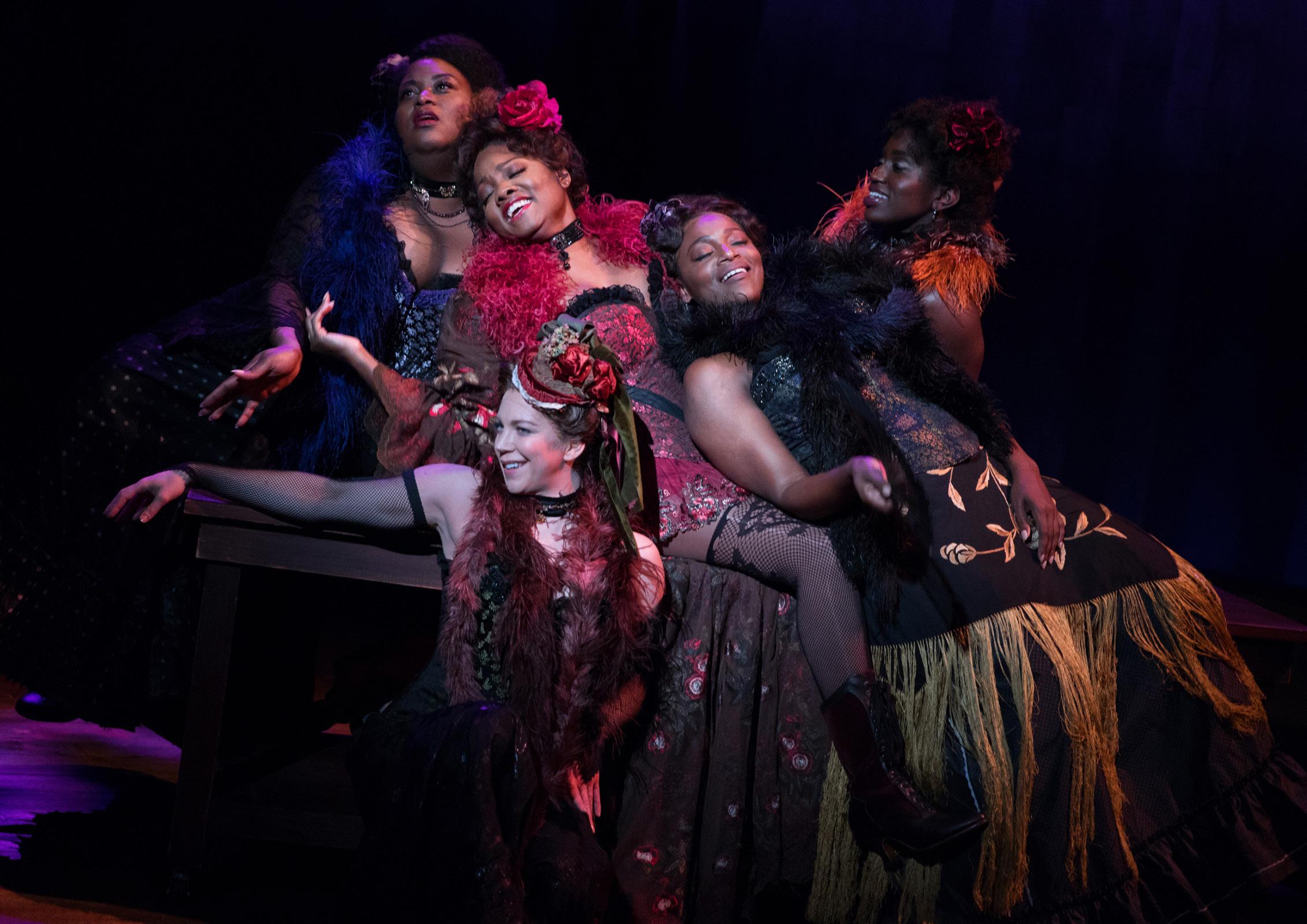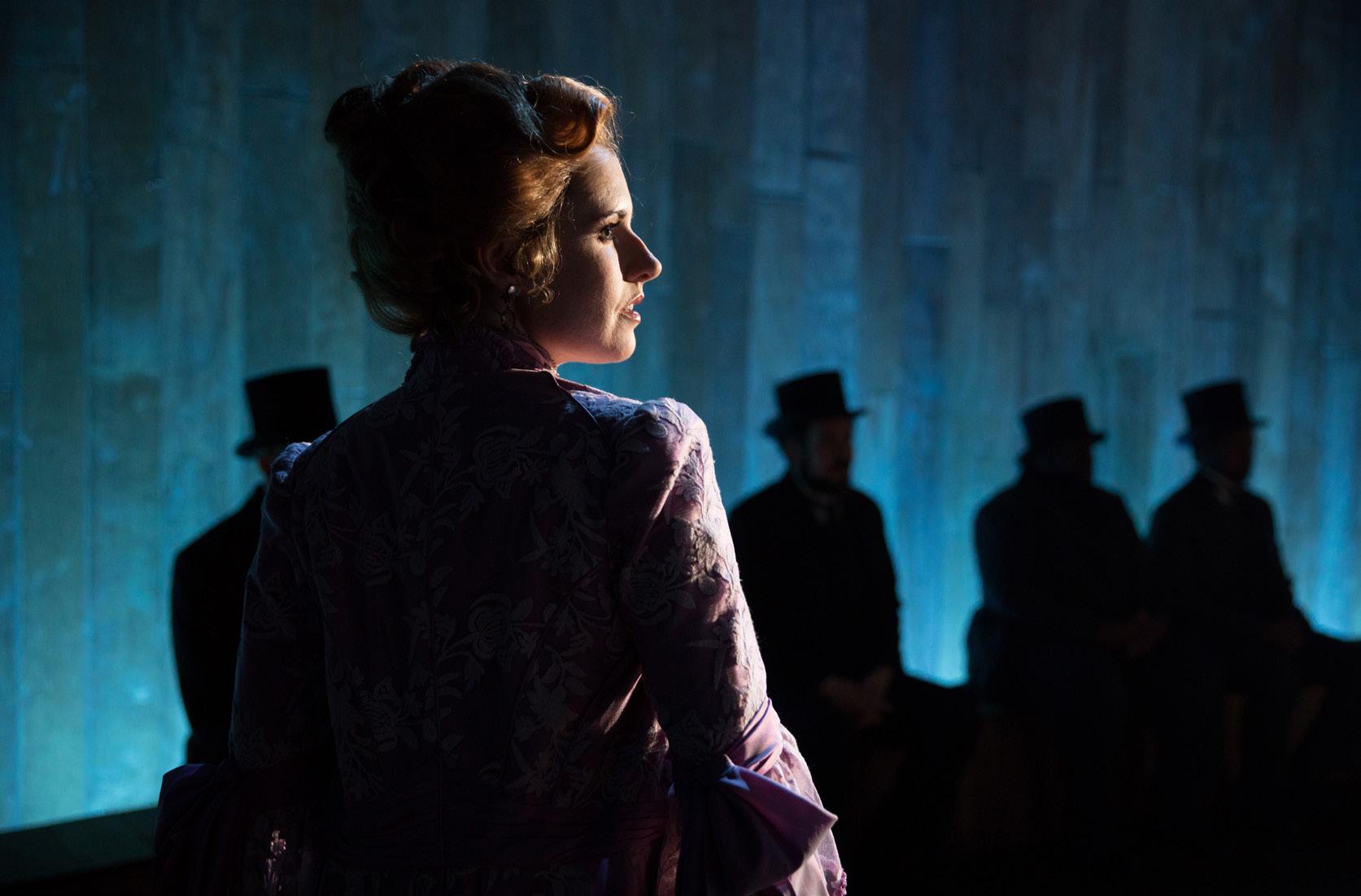
6 minute read
Come On, I’ll Show You
BY MIRANDA HAYMON
I applied to the Lincoln Center Directors Lab because I wanted to focus on craft. My parents are carpenters, and I see my own practice as akin to theirs. At this point, I had spent a significant amount of time developing new plays. I knew what kind of work I was drawn to, but I wanted to return to the school of thought based on utility, as opposed to taste. To borrow from carpentry—I wanted to spend time with other directors discussing the utility of a hammer, or a nail, or a screwdriver, for the theatre. I wanted to approach theatre as a craftsperson.
My time at the Directors Lab was brief and consequential. Our final lecture was from Bartlett Sher, and his opening line to us was, “I don’t want to talk about the business with you all, I want to talk about craft.” Um? Yes. I opened up my notebook and wrote down everything he said for the next hour and a half. Bart clarified the key difference between interpretive artists and generative artists, unclogging a drain that had kept me from exploring other parts of my artistic identity in addition to directing. Bart said, “I don’t believe in genius. I want to take away the burden of discovering your inner genius. With the right text and collaborators, you will find your groove.” The “working twice as hard to get half as far” narrative debunked. I don’t need to work twice as many hours, be a genius, or even strive toward becoming one. I can rely on what attracted me to directing in the first place: the opportunity to gather a group of people around text. Audiences, actors, and artists alike. Again and again.
For the first time, the craft of directing was broken down plainly, a gift for my Virgo mind. Bart said, “These are the six areas you want to focus your interpretation of a theatrical world in:
Space. Composition. Shape. Line. Rhythm. Tension.”
Just like that. I wrote it down. And underneath, I wrote:
Hammer. Screwdriver. Saw. Wrench. Wire cutter. Power drill.
Bart went on to further explain dynamics of each of these areas. How triangles are awesome, why center stage should be avoided, and the true difference between a thrust and a proscenium. My hand was cramping, but I didn’t care. I made my way to the front of the throng that rushed him at the end of his lecture and shared an opinion I had about what his synthesis of craft meant for directors directing work outside of their own race and ethnicity. Bart said, “You’re absolutely right, and we should talk about this more later.” I didn’t know when this later would come, but I knew this evening was a turning point in my directing career and, frankly, in my life.

Bartlett Sher
PHOTO Joan Marcus
About a year later, I was sitting down for coffee with Cynthia Mayeda, Senior Advisor for the New York Theatre Workshop’s 2050 Fellows. We were at the halfway checkpoint of my fellowship, discussing how it was going. The conversation was dynamic and engaging as ever, as all conversations with Cynthia are, but before we said goodbye, she had a question for me. Cynthia said, “Oh! Miranda, do you know anyone interested in working in opera?” I thought I was being punk’d. “Yes, me!” Her second question was, “Are you available to meet with the director, Bart Sher, sometime soon? He’s speaking to candidates for an associate now.” Again, an excited “Yes! I can.” “Great,” she said back. “And do you know Bart?” “Sorta,” I said, remembering our brief interaction during the lab. Cynthia said she would set up a meeting between the two of us.
I don’t remember exactly what Bart and I spoke about, but I do remember it was lively, intense, and heated at times. Bart was eager to hear about how I almost enrolled in a PhD in performance studies because I love theory so much, but at the last minute decided to try my hand as a freelancer. I wanted to know about how his liberal arts undergraduate education influences his work today. Talking to Bart, I felt like I was in school again, engaging in discourse and unpacking problems. But this time, instead of my directing education being trapped within the walls of a classroom or a model box, it could expand and grow into an actual theatrical space. At one point, Bart said the Vivian Beaumont is the best theatre, “Period.” And I said, “Why?” and he said, “Come on, I’ll show you.”

Naomi Louisa O’Connell in INTIMATE APPAREL at Lincoln Center Theater, directed by Bartlett Sher
PHOTO Julieta Cervantes
I did end up being Bart’s associate on INTIMATE APPAREL, and I quickly learned that his philosophy on sharing his knowledge is always, “Come on, I’ll show you.” I told Bart how much his Directors Lab visit impacted me, and how I wanted to learn more about each of the areas he mentioned. “Okay,” he said, “So, each week, I want you to pay attention to a different element, like shape or composition or line, and then we will talk about what you observed during lunch.” Lunch became a ritual for the two of us. We would start off by talking about rhythm or balance, or randomness and tension, but then our conversations would evolve into a play we’d just seen, or our favorite Kafka short story or our thoughts on trigger warnings before shows. Our fellow cast and crew would find us either laughing hysterically or arguing loudly, sometimes in the same moment. Bart always said at the end of our lunches, “These conversations. THAT is the work.” If I didn’t understand a point he was trying to make, Bart would just show me in rehearsal. He’d ask actors if they wouldn’t mind landing more center instead of down this next time through, then whisper to me, “See how much tension we lost?” I would see. And I’d pull out that same notebook and write it all down.
Our time on INTIMATE APPAREL was cut short— we were about a week away from freezing on March 12, 2020—but the level of craft and discourse that Bart engaged me in during our couple months in rehearsal is at top of mind, even in our current theatrical setting. How do I maintain a level of tension on Zoom? Can I balance the actors’ faces better on the screen? What’s the rhythm of this moment, and will it be better executed “live” or prerecorded?

INTIMATE APPAREL at Lincoln Center Theater, directed by Bartlett Sher
PHOTO Julieta Cervantes
I can’t wait to return to the theatre for many reasons, but to be honest, the one I look forward to the most is working with Bart. Perhaps as his associate, or as a visitor, or just a fly on the wall. Bart gives new meaning to “learning on your feet,” and I can’t imagine continuing my growth as a director, I mean, a craftsperson, any other way. There’s learning how to operate a skill saw in a classroom, and then there’s doing it on the jobsite. And there’s learning about the craft of directing from Bart’s lecture in the basement of Lincoln Center, and then there’s the privilege of being in the same room as him, of being his mentee, and of being his friend.

Miranda Haymon is a writer, director, and curator, and a Resident Director at Roundabout Theatre Company.










